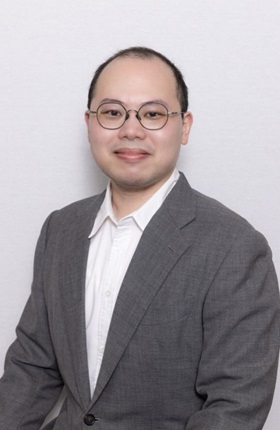
Biography
Dr Wan Kin received his Bachelor of Science (Honours) in Optometry and Doctor of Philosophy in Optometry from The Hong Kong Polytechnic University in 2014 and 2021, respectively. His doctoral studies mainly focused on the anterior segment of the eye and orthokeratology, which earned him the 2021/22 Faculty Distinguished Thesis Award from the Faculty of Health and Social Science. Dr Wan has been involved in teaching and clinical care at the School of Optometry as a Resident Optometrist, Senior Resident Optometrist and Visiting Clinical Associate. He has also been passionate about community service since his undergraduate days, and as a result, has received several awards, including the HKAPPO Community Service Award, the HKAPPO Best Community Project Award, the Outstanding Student Award from The Hong Kong Polytechnic University, and the Reaching Out Award from the HKSAR Government.
Research Overview
Dr Wan’s research focuses on corneal biomechanics and orthokeratology. Corneal biomechanics can provide insights into the overall mechanical strength of the eye, as a weakened ocular structure is potentially more susceptible to axial elongation. In contrast, orthokeratology, which uses a specially designed contact lens to reshape the cornea, has been shown to be able to retard axial elongation in children, thereby slowing myopia progression. Understanding of corneal biomechanics can also shed light on the mechanism behind orthokeratology's effectiveness.
Education and Academic Qualifications
- Bachelor of Science in Optometry, The Hong Kong Polytechnic University
- Doctor of Philosophy, The Hong Kong Polytechnic University
Professional Qualifications
Professional Qualifications
- Registered Optometrist (Part I)
- Orthokeratology Practice (Distance Learning), The Hong Kong Polytechnic University & Hong Kong Academy of Orthokeratology
- British Contact Lens Association (BCLA) Fellow
Research Interests
Research Output
- Wan K, Wolffsohn JS & Cho P. (2023). Role of waveform signal parameters in the classification of children as relatively slow and fast myopia progressors. Clinical and Experimental Optometry, 16:1-7.
- Wan K, Lau JK & Cho P. (2022). Orthokeratology lenses with increased compression factor (OKIC): a 2-year longitudinal clinical trial for myopia control. Contact Lens and Anterior Eye, 46:101745.
- Wan K, Cheung SW & Cho P. (2021). Corneal thickness changes in myopic children during and after short-term orthokeratology lens wear. Ophthalmic and Physiological Optics, 41:757-767.
- Wan K, Cheung SW, Wolffsohn JS & Cho P. (2021). Repeatability of corneal biomechanics waveform signal parameters derived from Ocular Response Analyzer in children. Contact Lens and Anterior Eye, 44:101373.
- Wan K, Lau JK, Cheung SW & Cho P. (2019). Refractive and corneal responses of young myopic children to short-term orthokeratology treatment with different compression factors. Contact Lens and Anterior Eye, 43:65-72.
- Lau JK, Wan K, Cheung SW, Vincent SJ & Cho P. (2019). Weekly changes in axial length and choroidal thickness in children during and following orthokeratology treatment with different compression factors. Translational Vision Science and Technology, 8, 9.
- Wan K, Cheung SW, Wolffsohn JS, Orr JB & Cho P. (2018). Role of corneal biomechanical properties in predicting of speed of myopic progression in children wearing orthokeratology lenses or single-vision spectacles. BMJ Open Ophthalmology, 3:e000204.
- Hon Y, Wan K, Chen GZ, Lu SH, Lam DC & Lam AK. (2016). Diurnal variation of corneal tangent modulus in normal Chinese. Cornea, 35:1600-1604.



